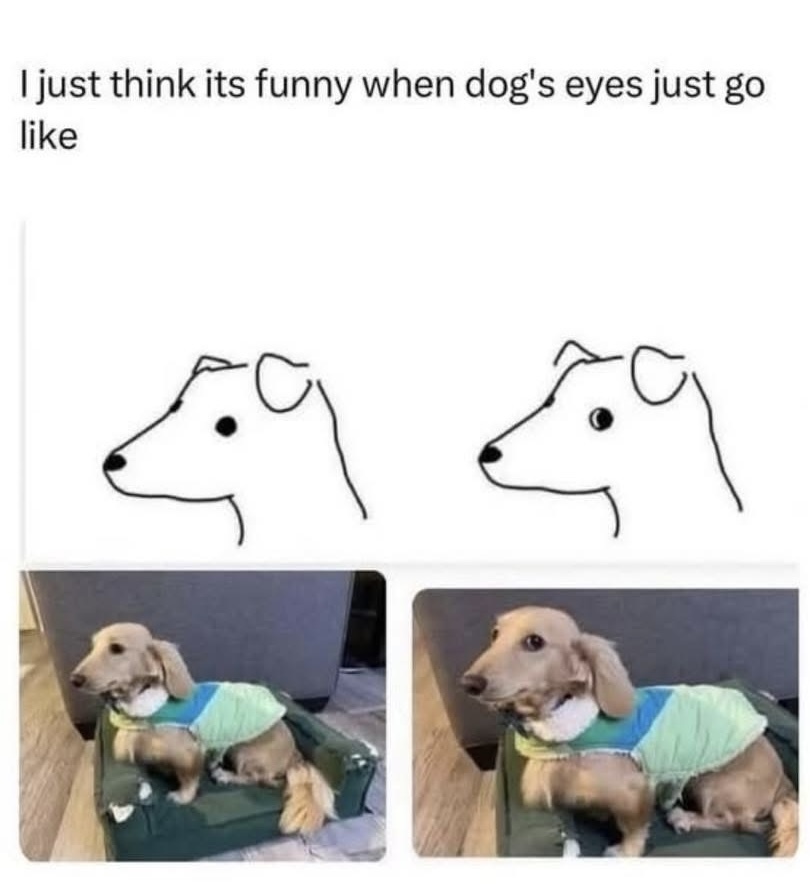Dogs
All about dogs - dog breeds, dog training and behavior, news affecting dog owners or handlers, puppy pics, etc.
Rules (Will be refined later on).
-
Don't be a dick. This should cover most things, just keep in mind that everyone started somewhere and try to be helpful rather than rude or judgmental.
-
No personal attacks based on training style or tools.
Discussion of balanced training including proper use of aversives is allowed here. -
All breeds and mixes are welcome. You can criticize backyard breeding practices but don't pile on people because they own a specific breed or prefer purebreds or mixed breeds.
-
Do not support backyard breeders or puppy mills. Please do not link to or suggest buying from high volume breeders or those with an obvious lack of standards and testing.
-
Do not help or support fake service animals. Please do not encourage people to buy fake service dog vest or ESA letters to get around rental or other restrictions & do not give advice on how to misrepresent a dog as a service or support animal.
view the rest of the comments

Many people say this is a half-moon eye or whale eye, and it is, yet there is probably not enough context to prove what it means in this photo.
Like all dog body language, one signal is not always enough to determine a dog's real emotions. This is why many dog body language signals are called meta-signals, which you can guess by their name: signals about signals. Multiple signals create a total that might be different from some of the individual signals being made.
Imagine playing with a dog, tugging on a toy, and having them growl and show whale eye. Someone might say, "That dog has half a moon or a whale eye! They are upset!" Meanwhile, the dog's body is loose, sneezing, its elbows are bent, and its tail lazily wags. When you stop tugging, they take your cue and stop tugging as well.
Assign a value to their mood, where 0 is neutral, a negative number is a negative emotional expression like growling, whale eye or lip licking and a positive number is associated with positive body language. Let's add that up: whale eye -1, growl -1, loose body +1, sneezing +1, elbows bent +1, tail wags +1, following along +1, tugging +1. That's -2+6=4. The dog is very happily playing. Soon, you will learn that your dog's growling in those situations is a play growl; it's a very good thing to hear (never discourage any growl). You will also know that sequences of behaviours take into account this equation. For example, the dogs reversing roles after a minute is like a +5 in friendly interaction.
Nobody does body language math exactly like that in their head, but it's a good example of the multifaceted thinking that goes into interpreting how your dog feels. But people pretending they know everything about what a dog is doing in a static photo vs. a video showing the entire interaction over time just don't have enough information. It's great that people's hearts bleed for these animals, but it's a commentary on incomplete information.
My dog makes whale eye before I throw the ball, jumps onto his bed, and makes the same expression before blasting off the bed in glee. I have no doubt the dog is voluntarily playing fetch and having a great time.
I've never understood why there's a special term for whale eye. Like. Isn't it just...their eyes being turned to one side? Side eye? It just seems like it means the dog is looking somewhere other than where their head is pointed. To me it usually seems like a lack of interest. "I want to see this but not enough to turn my head". Not sure why it would be read any different from equivalent human behavior.
Exactly.
A lot of armchair dog behaviourists will never get the chance to meet the dog they are talking about. And when teaching dog training, you have to tell owners to actually get to know their dog because they have their own individual expressions that are unique to them, or uniquely learned behaviours that you've accidentally reinforced
I think many dogs display whale or moon eyes, which in exactly the situation you described. Dogs like to check things out without moving their heads. Additionally, if we find that cute, the dog will likely develop a superstition to do that more because it's rewarding to get your attention.
This is really obvious in puppies, who mostly display innate behaviours compared to the same dog as an adult who has learned many expressions that get them what they want.
I think the biggest behaviour people misconstrue is licking. They do not notice the difference between hard licks and soft licks. Soft licks are friendly, or they taste delicious on your skin.
A hard lick means, "Can you please stop what you are doing?" It's a polite way of changing the subject. Many people misshandle their dogs and accidentally think the dog likes it because the dog licks them, so they do it more. It's such a trap for human dog interactions because their way of saying stop is confused for asking for more.